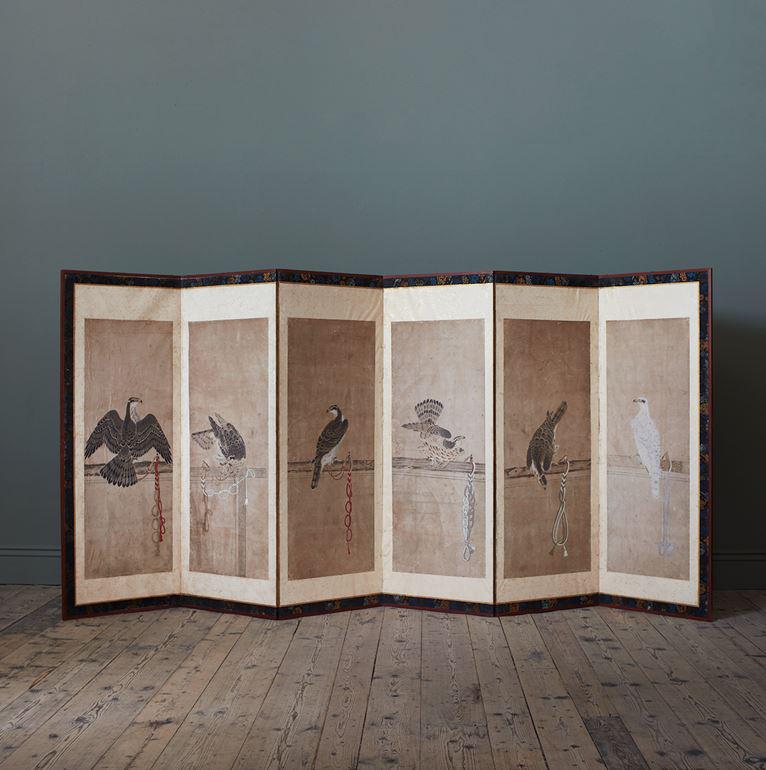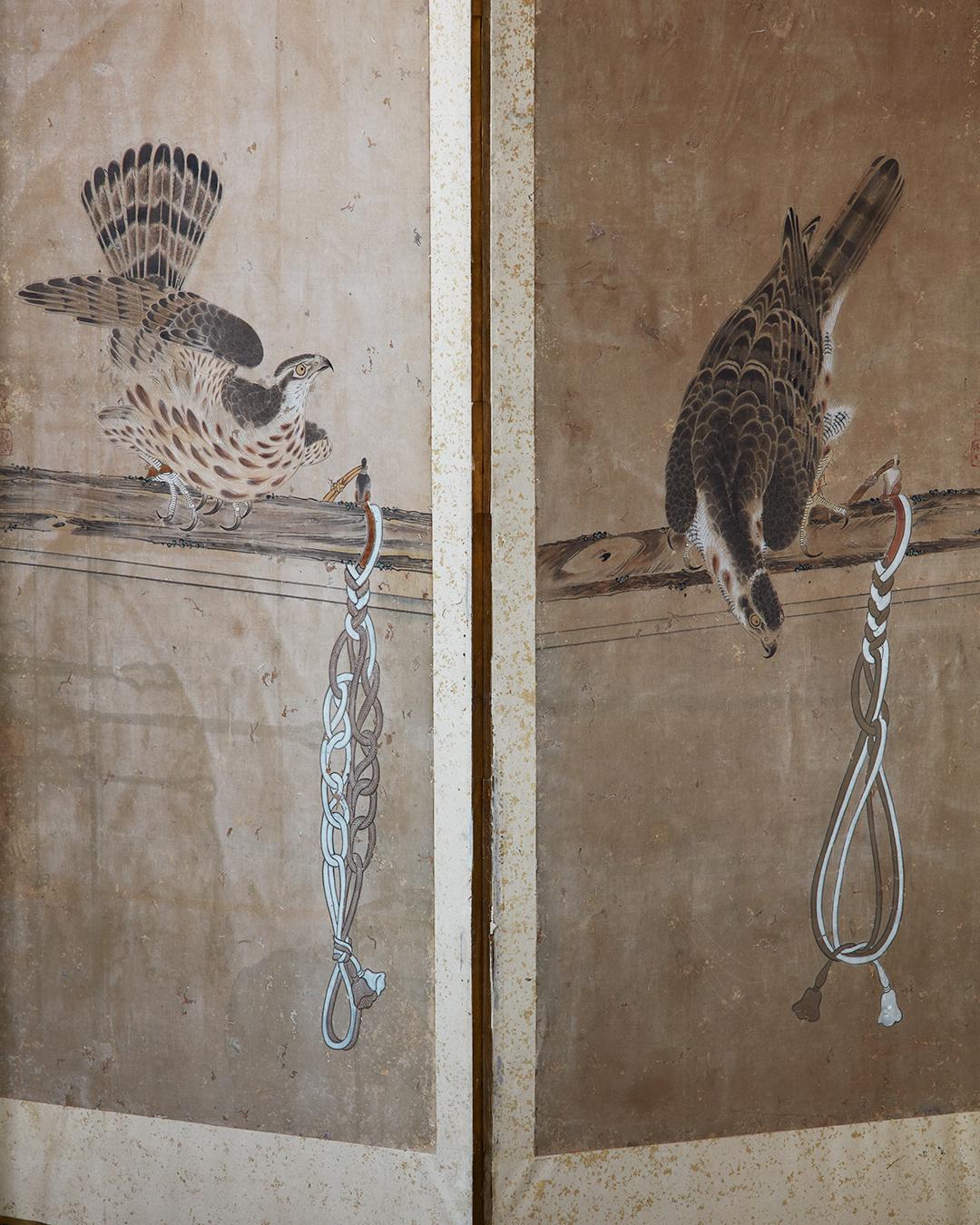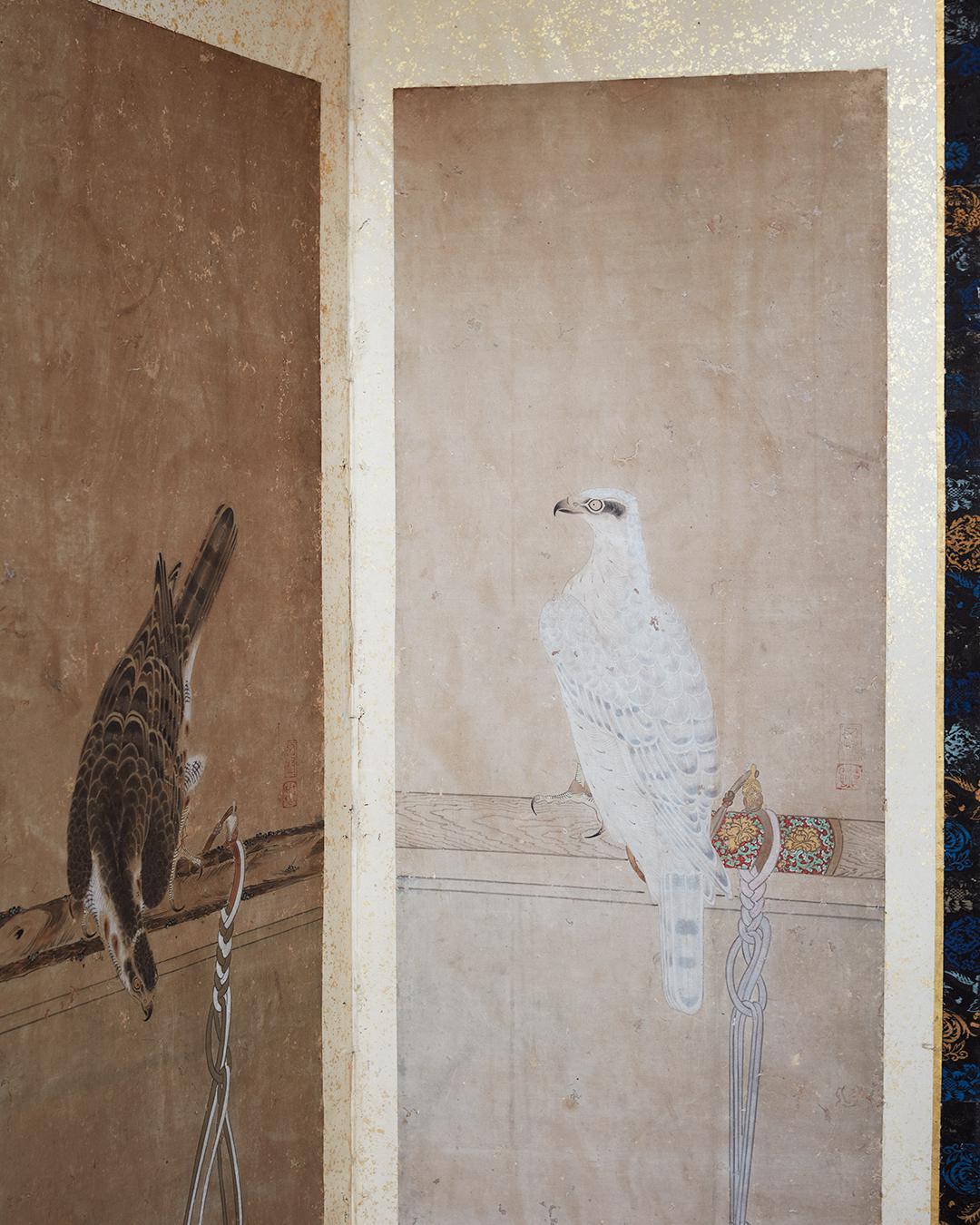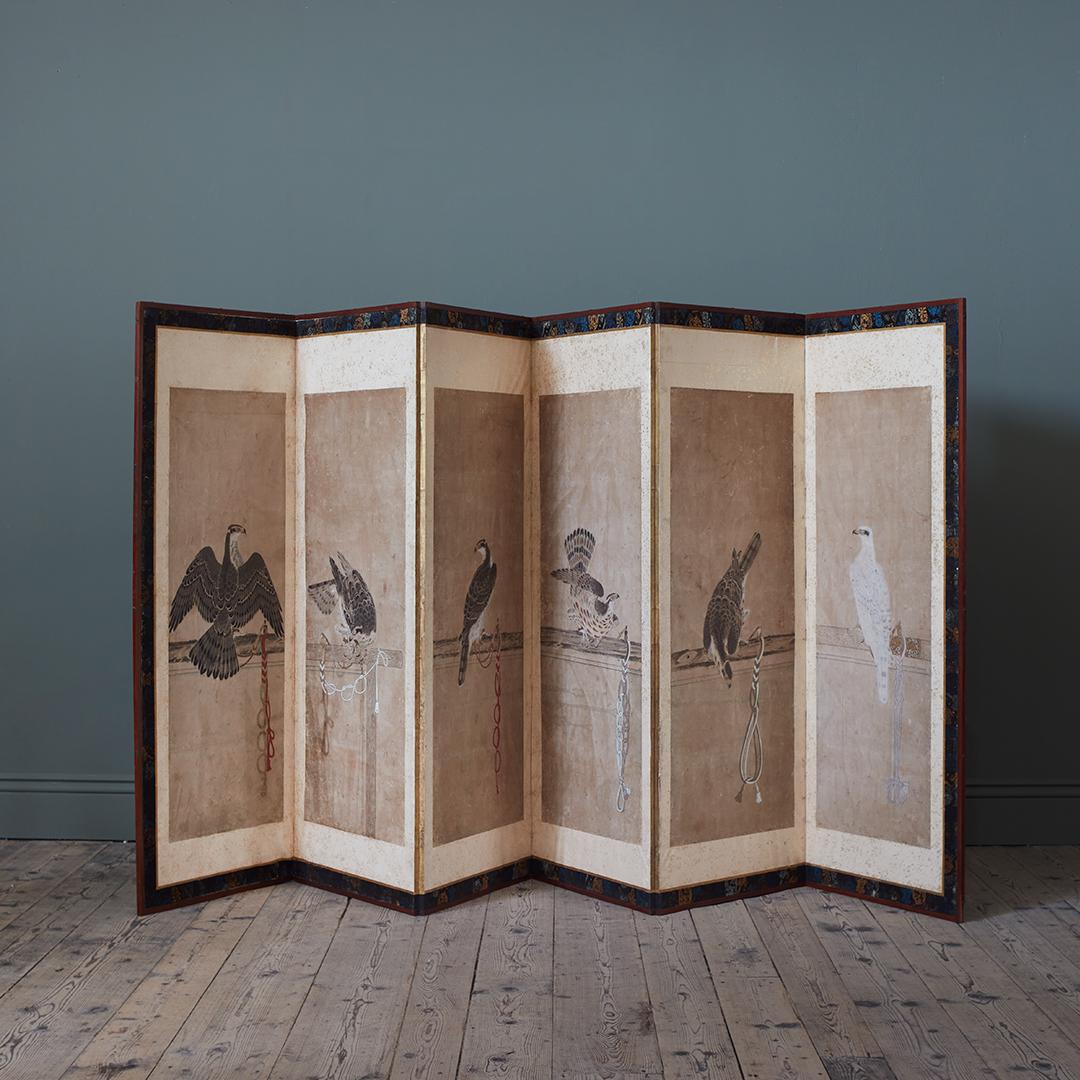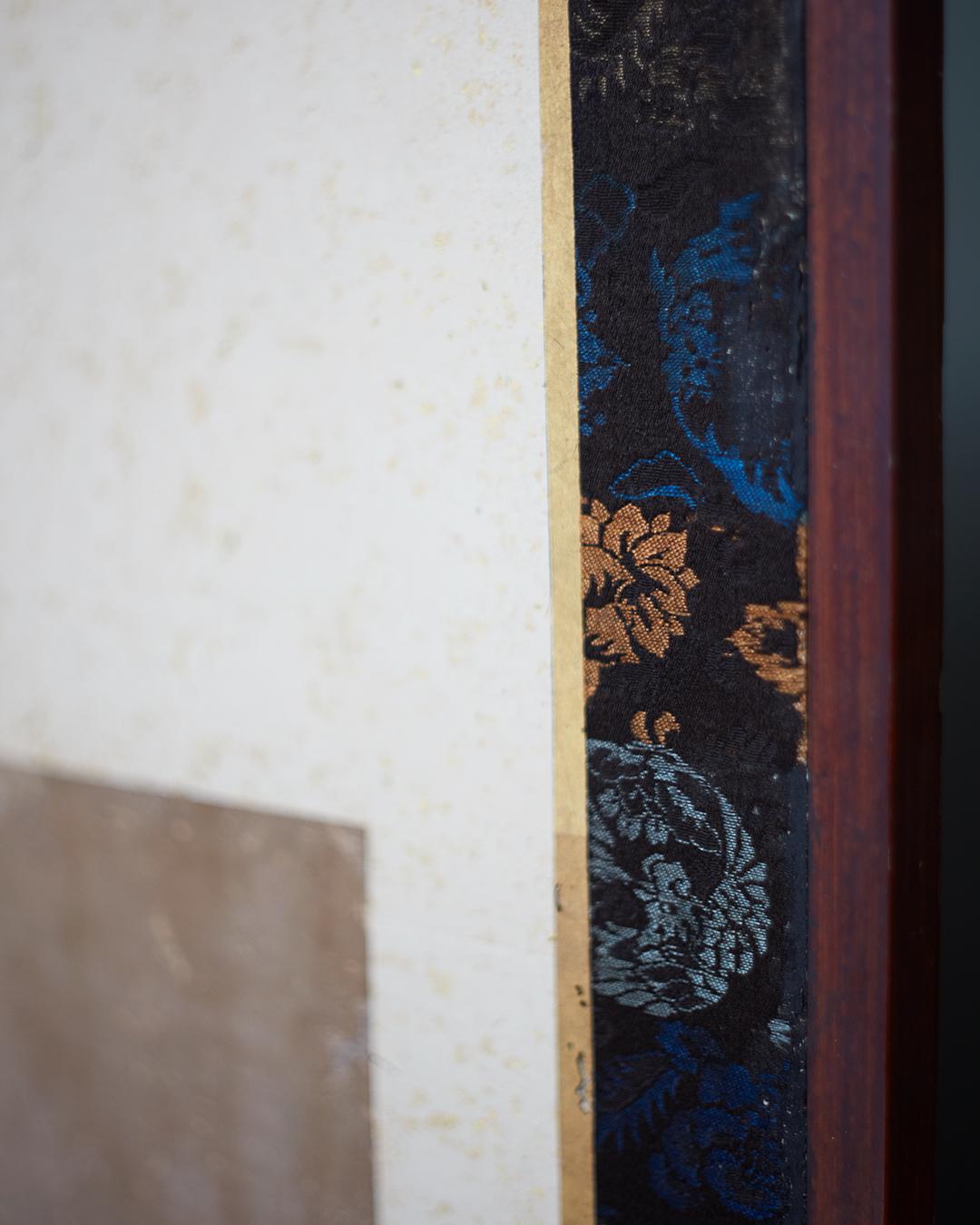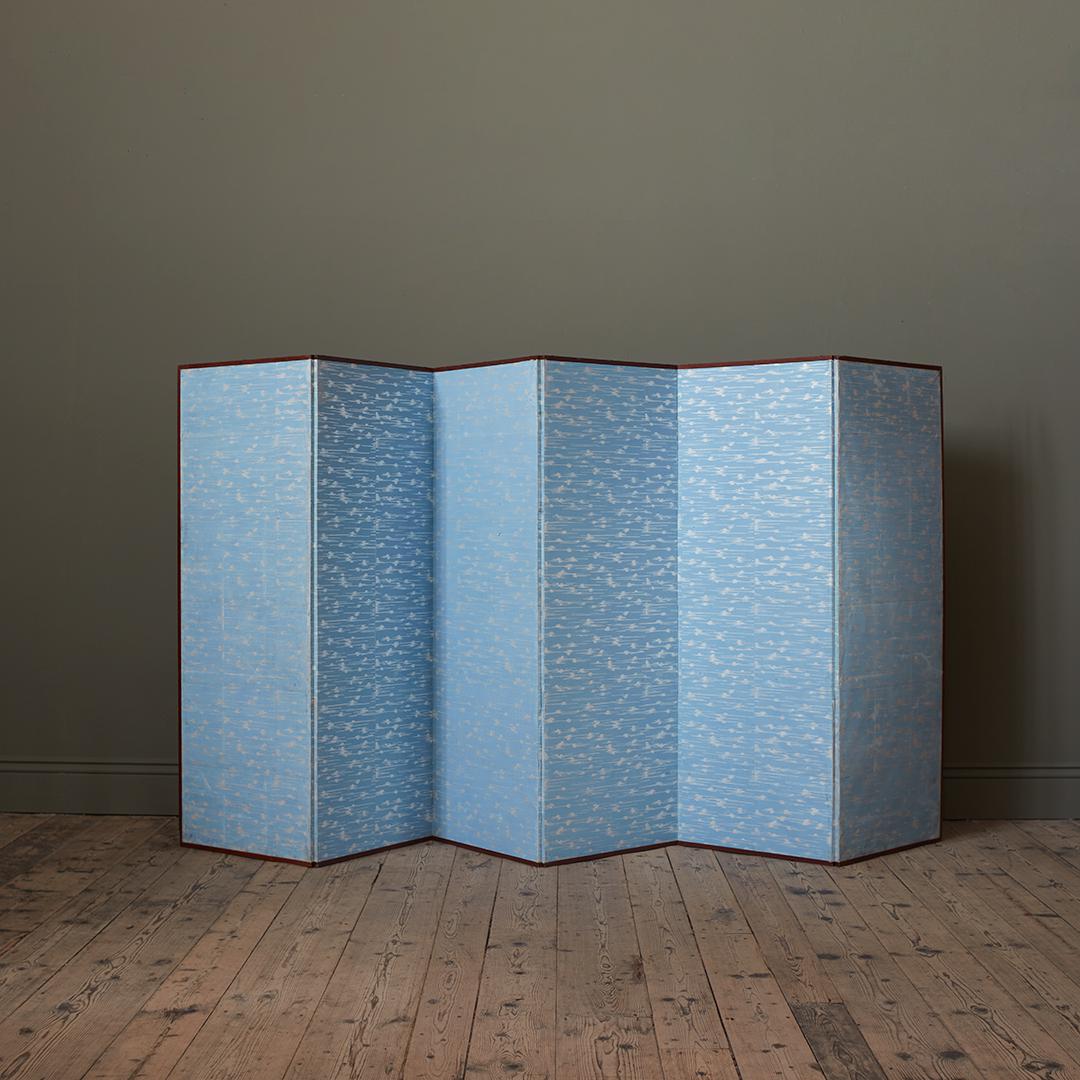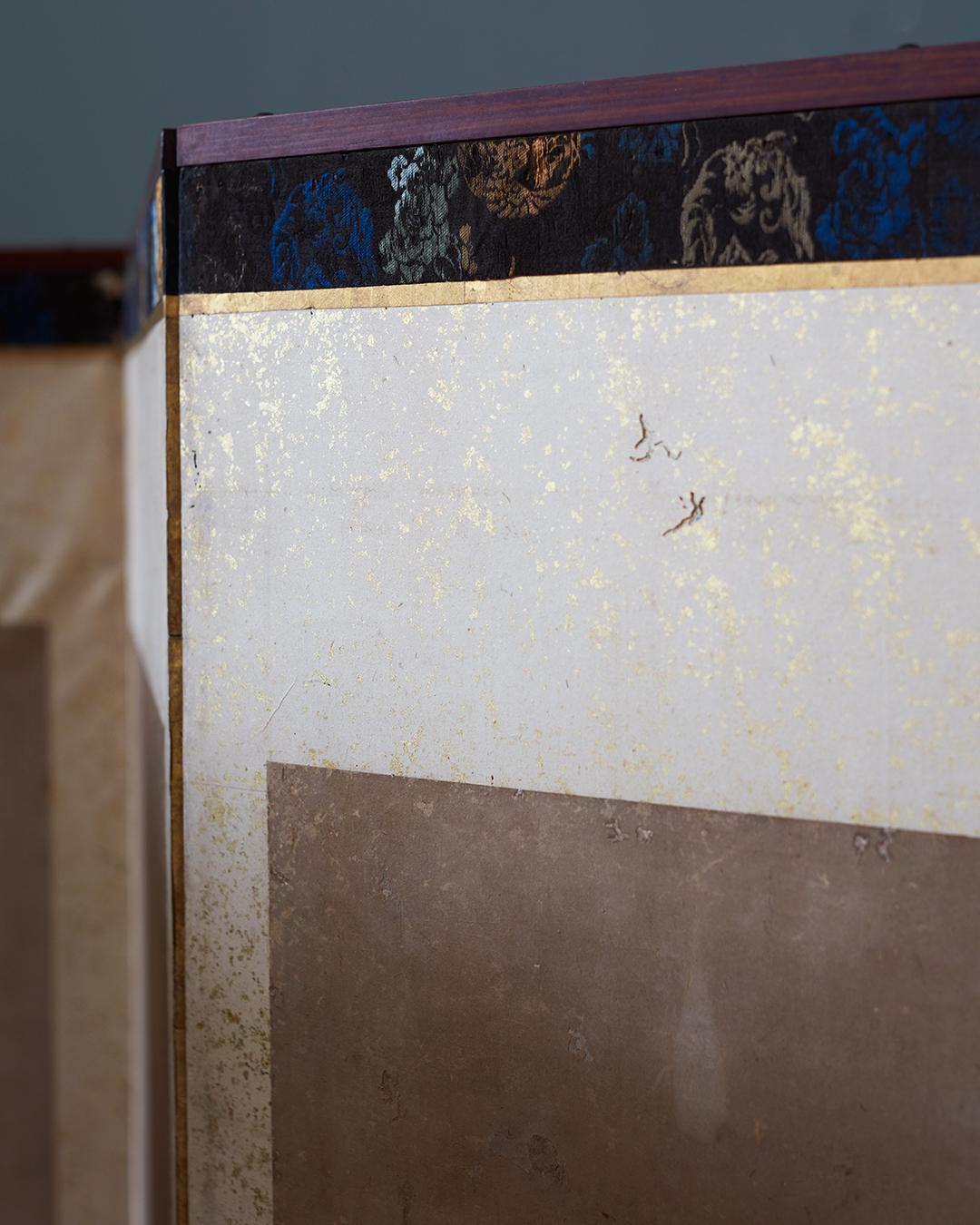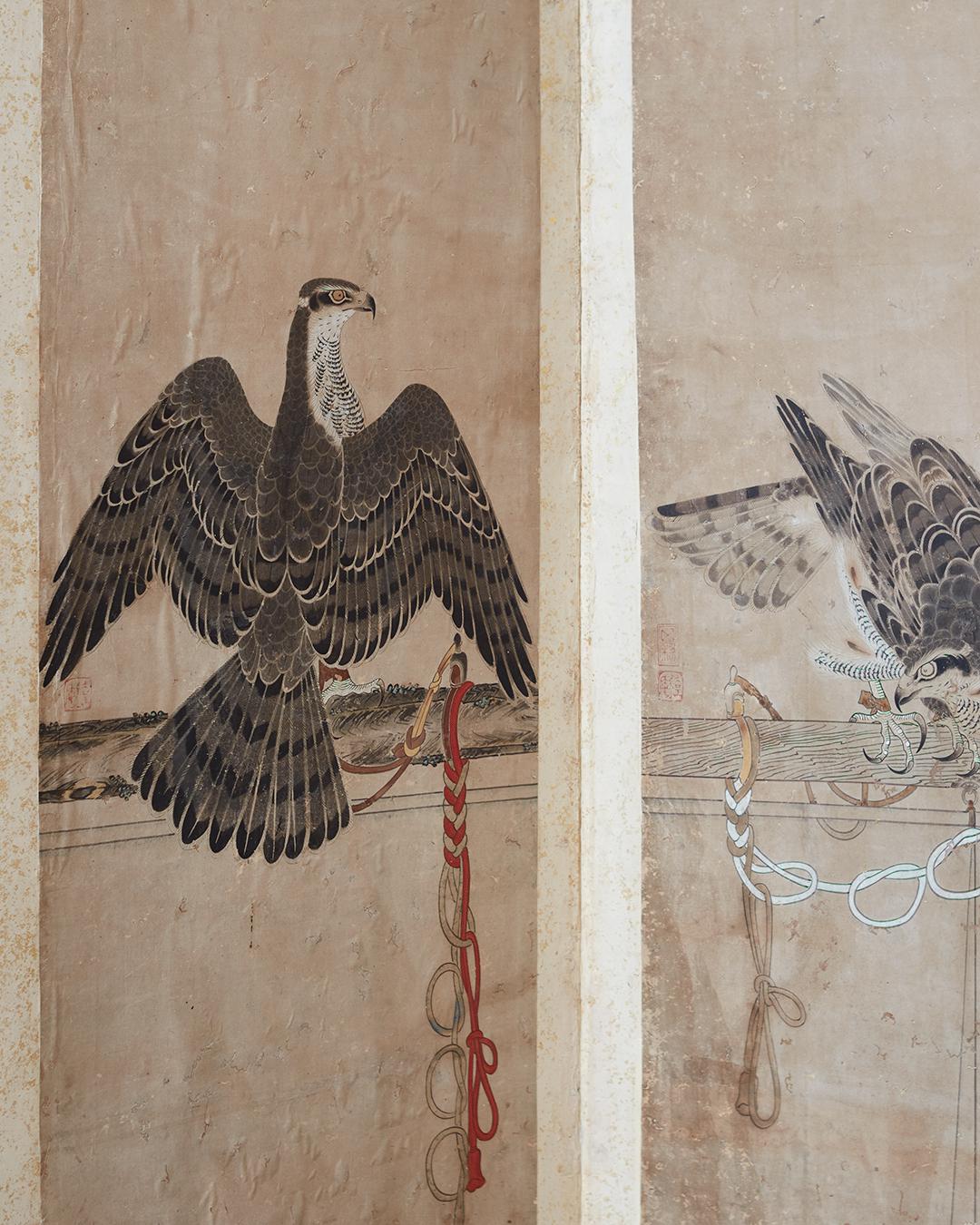A Single Late 19th Century Six Panel Paper Screen, depicting Tethered Hawks, in the manner of Soga Chokuan
Six gouache painted scenes of tethered hawks, laid down to form six panel screen, with pigment and ink on rice paper, surrounded by Japanese silk bordered wooden frame. Late Edo (1615-1868) – Meji period (1868-1912), in the manner of renowned Japanese painter Soga Chokuan (Japanese, active ca. 1596-1615) recognised for his bird-and-flower paintings, and particularly celebrated for his depictions of falconry. Commissioned by prominent samurai to paint either individual or sets of tethered hawk images for folding screens, the details of his life are mostly undocumented, however Soga’s son, Nichokuan (literally, Chokuan II), continued the well documented ‘Soga School, which is known for impressive renderings of hawks and avian compositions.
Soga Chokuan (active circa 1596-1610, of the Momoyama Period) and his son Nichokuan (active circa 1620-1660) were powerfully expressive painters who created highly charged, at times overtly violent images. Virtually every subject painted by Chokuan and Nichokuan became a vehicle for expressing suppressed tensions and peculiar fascinations. A study of the documents of Chokuan and Nichokuan, and paintings by their hands reveals that these two artists were probably descendants of the Echizen Soga school, a family also renowned for eccentric art. Here we see hawks tethered to their perches, awaiting release by their masters, which symbolized military preparedness and valour. Their fearsome beauty and predatory features -sharp beaks, keen eyes, long curving talons – made them metaphors of martial training and the warrior spirit. Taken as a whole, the style of Chokuan and Nichokuan can be seen as a natural outgrowth of Echizen Soga art, and the lasting Soga school legacy can be considered a continuous, willful rebellion against the mainstream of Japanese art.
Comparables;
Original Momoyama Period (Inscriptions by Ittō Jōteki (Shōteki) Japanese, before 1606), at Met Museum New York (Accession Number: 2018.449.1, .2)
19th Century Late Edo Period, (Edo (1615-1868)-Meji period (1868-1912), also At Met Musueum New York (Accession Number: 14.76.67a-l)
Further Reading;
Lillehoj, Elizabeth Ann (1988). The Art of Soga Chokuan and Nichokuan, Two Painters of Sixteenth- and Seventeenth-century Japan (Ph.D. thesis). Columbia University.
Measured flat:
Length: 381cm, 12 foot 6″
Height: 172cm, 67 3/4″
(each panel 63cm, with the two flanking end panels 64.5cm)
£16,500


